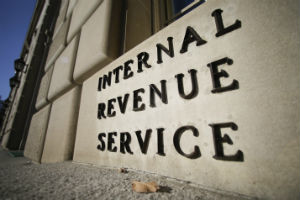The Internal Revenue Service (IRS) has eased its rules on retroactive reinstatement of tax-exempt status after revocation, effective for applications submitted after January 2. Revenue Procedure 2014-11 (http://www.irs.gov/pub/irs-drop/rp-14-11.pdf) makes retroactive reinstatement of exempt status easier to receive for organizations where the status was automatically revoked for failing to file a federal Form 990 for three consecutive years.
Under the previous procedure, organizations for which a Form 990 was not filed for three consecutive years had to show reasonable cause for failing to file for all three years, and had to do so within 15 months. Now, organizations large enough to file a Form 990 need to show reasonable cause for only one year if applying for retroactive reinstatement within 15 months of revocation.
Organizations for which a 990-EZ or 990-N is filed do not need to show reasonable cause. However, reasonable cause for all three years must be shown for all organizations of any size seeking for retroactive reinstatement after 15 months.
Organizations where the tax-exempt status was revoked are considered non-exempt from the due date of the third year’s filing to the post-mark date of its reinstatement application. While it is non-exempt, donations are non-deductible for the donors and imcome tax must be paid.
“For those organizations that are truly operating and for whatever reason lost their status, it’s a great thing for them,” said David Shuster, a tax principal at New York City accounting firm Grassi & Co. “It will be a lot easier to get retroactively reinstated. Getting reinstated from the post-mark date (of the application) has never been a problem, it’s the retroactive reinstatement that was difficult.”
The IRS did not respond to a request for comment on how many organizations have their status automatically revoked per year, how many retroactive reinstatement applications it receives per year, and how many of those applications are approved. There are more than 541,000 organizations listed on the IRS’s Exempt Organizations Select Check list with automatic revocations since March 2010, but that list does indicate the organizations’ current exemption status.
Shuster believes that many organizations lose the status because they’re volunteer-run and do not have the necessary tax expertise. “A lot of organizations have sufficient assets and revenue to have to file (a full Form 990), but don’t have the resources to do so,” he said. “Volunteers with no tax experience aren’t that sophisticated. They miss deadlines, they don’t know they have to file, any number of things. For a larger organization that has paid professionals and outside accountants, you probably don’t see revoked status for failure to file too often.”
According to Shuster, the prior requirement for showing reasonable cause for all three years was onerous because what the IRS might let slide in the first year might not be acceptable in the second and third. “(Organizations) would say, ‘we’re short-staffed, we were new,’ all kinds of things that would work the first time around,” he said. “If you fail to file one year, the IRS would probably say it’s alright, but if you fail to file two or three in a row, they’ll say you need to get your act together.”
Many organizations whose status is automatically revoked are probably defunct, said Shuster. “A lot of organizations, they get an idea they want to start a nonprofit, they pursue it for a while, then they give it up and don’t bother filing returns or let their status lapse,” he said.
According to the procedure document, “The IRS will apply this revenue procedure to Applications that it has already received and are pending.” An organization that has already been reinstated from the application post-mark date but not retroactively should resubmit its reinstatement application and its determination by May 2, if the application meets the requirements for retroactive reinstatement under the new procedure.
